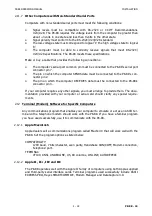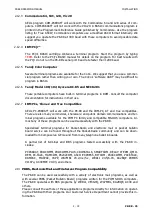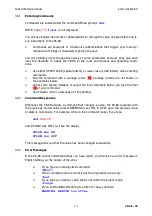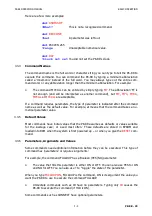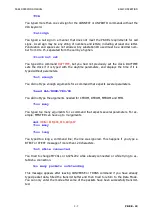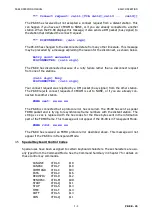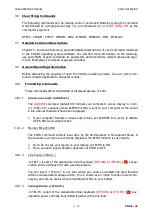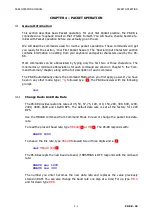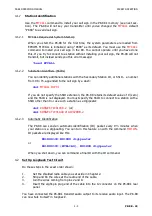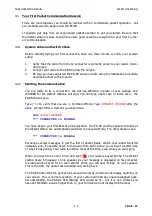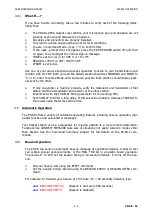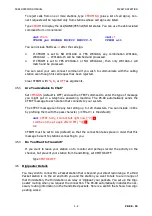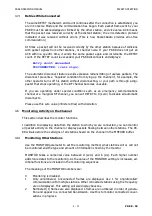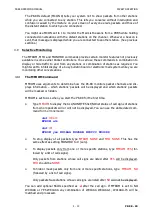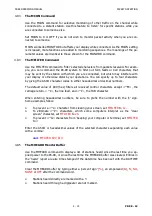
PK-88 OPERATING MANUAL
PACKET OPERATION
4 - 1
PK-88 - 48
CHAPTER 4 – PACKET OPERATION
4.1
General Information
This section describes basic Packet operation. For your first Packet practice, the PK-88 is
connected in a 'loopback' circuit so that it 'talks to itself.' You will have a chance become fa-
miliar with Packet operation before you actually go on the air.
We will describe commands used for routine packet operations. These commands will get
you ready for the section, 'Your First Packet Session’. The 'Special Input Characters' section
contains information on editing from your keyboard and special characters used by the PK-
88.
Most commands can be abbreviated by typing only the first two or three characters. The
mnemonics or minimum abbreviations for each command are shown in Chapter 5, the 'Com-
mand Summary' chapter, along with a full description of each command.
The PK-88 automatically enters the Command Mode when you first apply power. If you have
been in any other mode, type
[^C]
followed by a
[
↵
]
. The PK-88 answers with the following
prompt:
cmd:
4.1.1
Change Radio Link Data Rate
The PK-88 provides radio link rates of 45, 50, 57, 75, 100, 110, 150, 200, 300, 600, 1200,
2400, 4800, 9600 and 19,200 BPS. The default data rate is set at the factory for 1200
BPS.
Use the HBAUD command from Command Mode to read or change the packet link data-
rate.
To read the present baud rate, type
HBAUD[
↵
]
or
HB[
↵
]
. The PK-88 responds with:
HBAUD 1200
To chance the link rate, type
HBAUD
followed two or three digits and a
[
↵
]
.
cmd:
HBAUD 300[
↵
]
The PK-88 accepts the new baud rate and, if BBSMSGS is OFF, responds with the old baud
rate:
HBAUD was 1200
HBAUD now 300
The number you enter becomes the new data rate and replaces the value previously
stored in RAM. You can also change the baud rate one step at a time; For up type
HB U
and for down type
HB D
.

